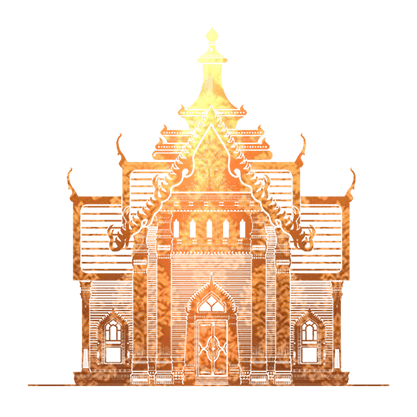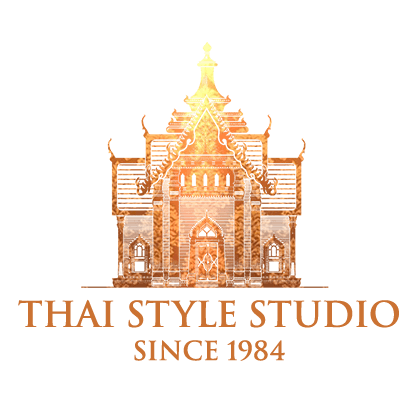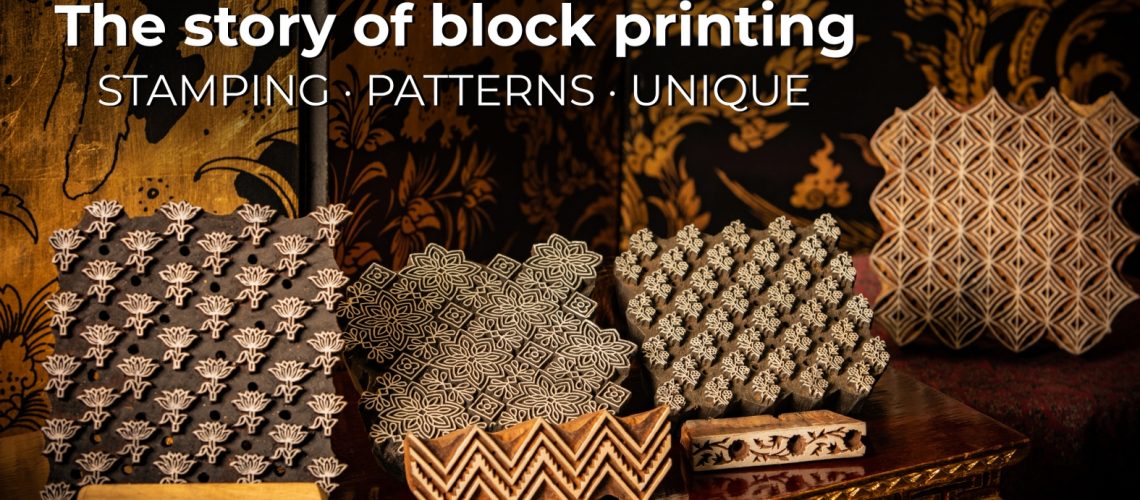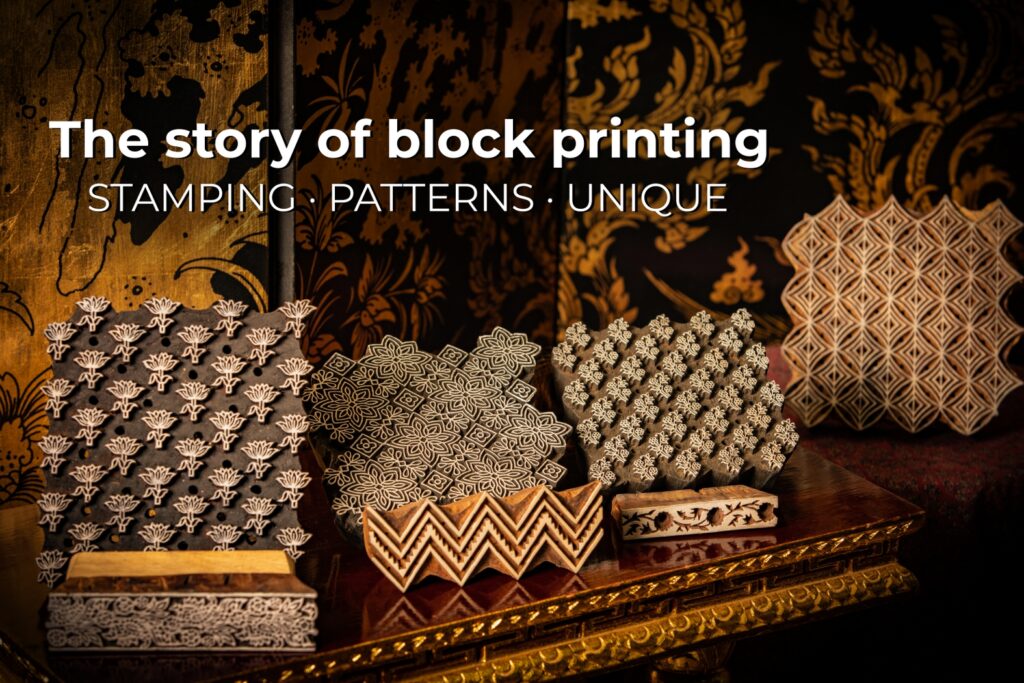
The art of “Hand block printing” is an esteemed fabric design methodology with its origins deeply rooted in India.
For numerous generations, adept Indian craftsmen have diligently crafted detailed block prints that captivate and shape design aesthetics globally. This enduring tradition, transmitted across generations, places paramount importance on quality and authenticity. Each block-printed fabric undergoes an elaborate and time-intensive printing process. Every crafted piece possesses its unique charm, and the nuanced imperfections inherent in the blocks enhance the overall allure, serving as a testament to unparalleled craftsmanship.
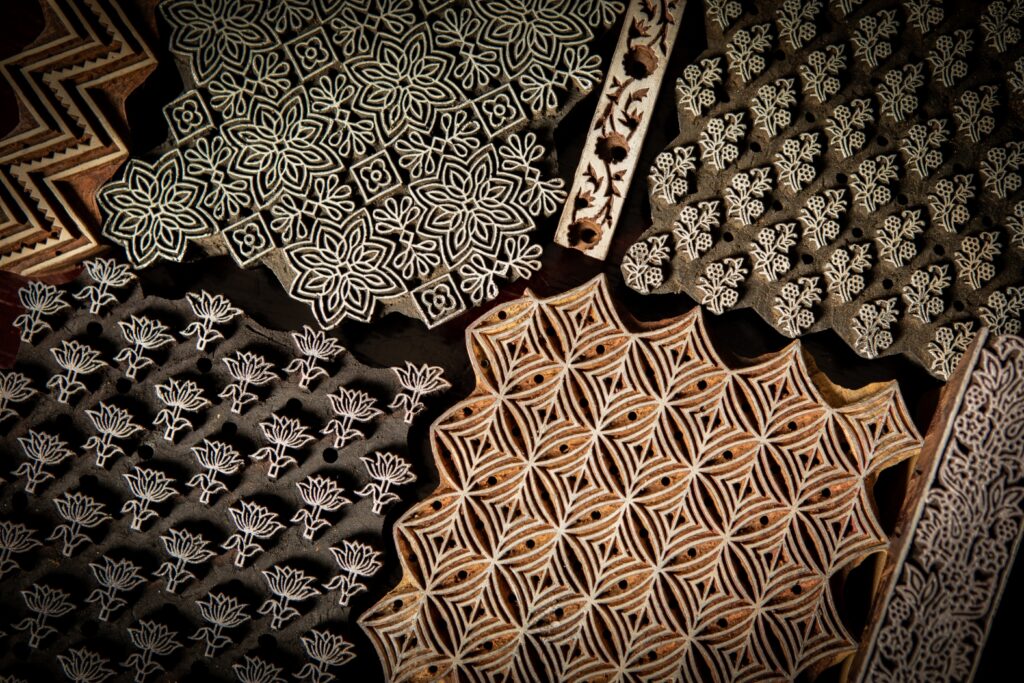
Block printing is an ancient artistic practice employed to transfer intricate designs onto a myriad of materials, including textiles and paper. Its lineage can be traced back to ancient India, where artisans initially employed organic vegetable dyes and pigments in their creations. The city of Jaipur, often referred to as the “Pink City of India,” serves as the capital of Rajasthan and exemplifies structured urban planning in contemporary India. Celebrated for its aesthetic grandeur, cultural profundity, and mastery in Hand block Printing, Jaipur symbolizes India’s rich artistic heritage.
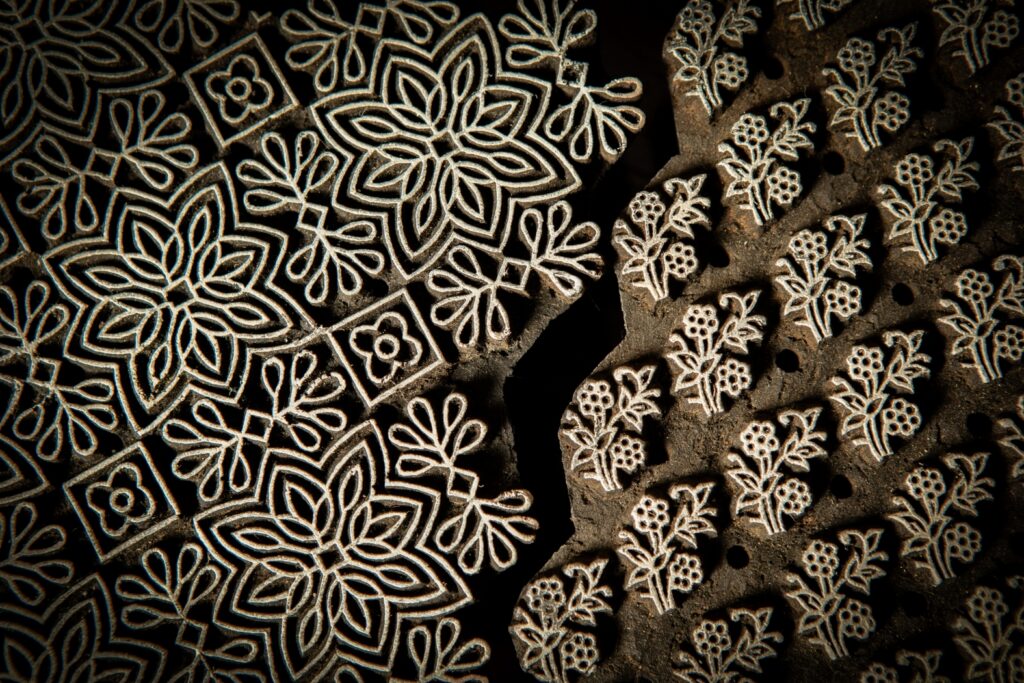
The traditional craft of Block Printing has thrived in Rajasthan, India, for over five centuries. Dating back to the 12th century, this sophisticated art of imprinting designs on fabrics garnered royal patronage, becoming synonymous with regal endorsement from its inception.
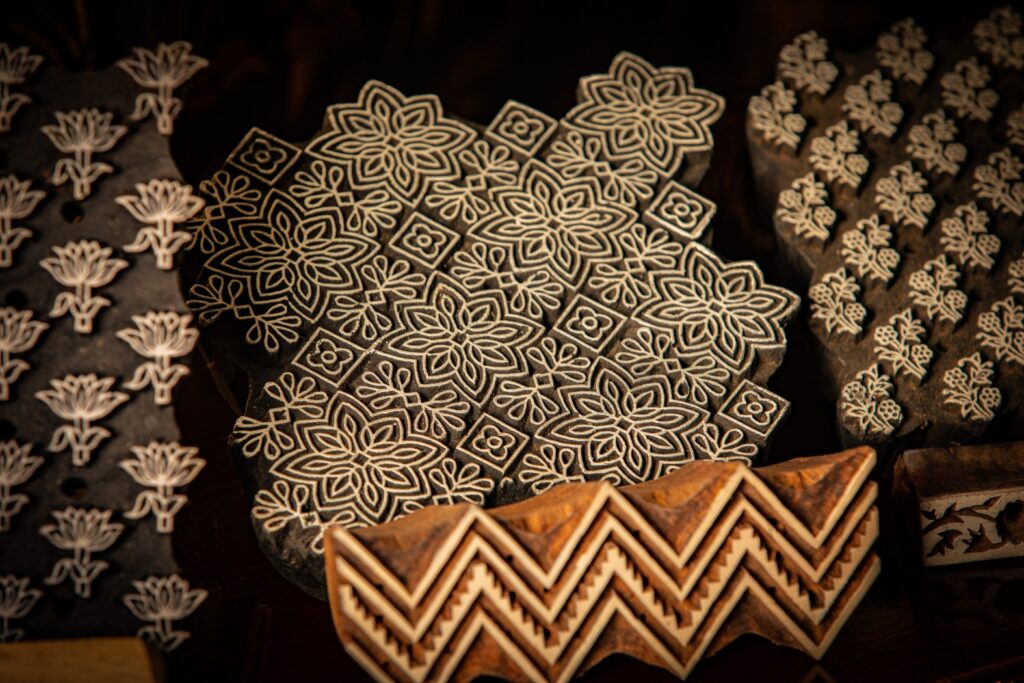
“Hand block printing patterns on textiles is simple yet the slowest textile printing method.”
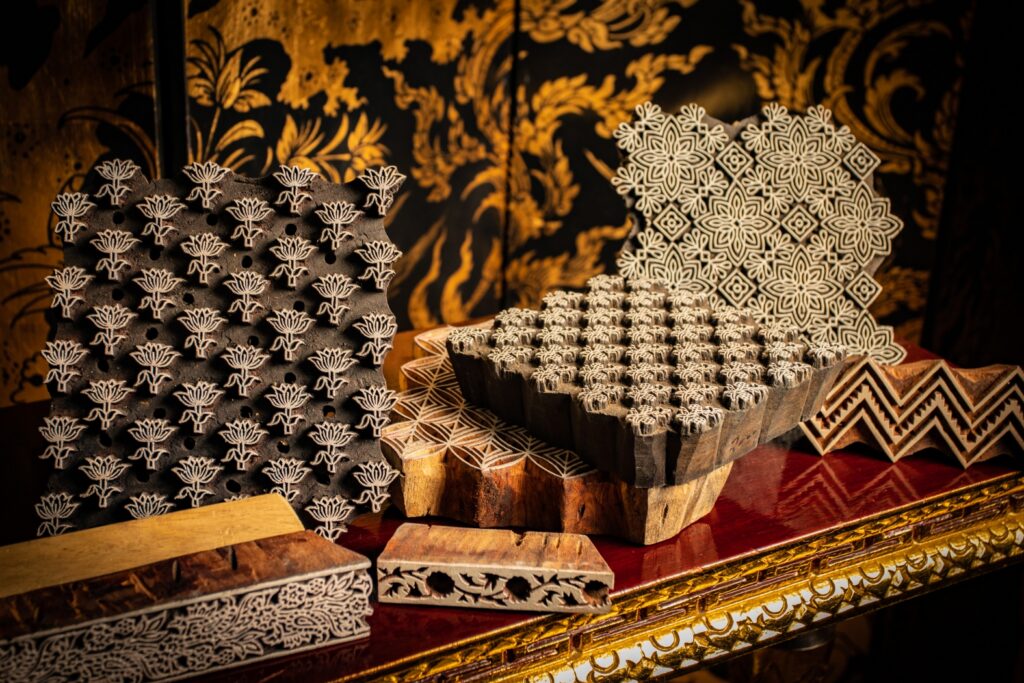
Relevance to Thailand (Siam)
“Indian fabric” occupies a distinguished position among the commodities extensively traded from India. Thailand’s historical trade affiliations with India trace back to antiquity. During the era of Ayutthaya’s prominence as a pivotal trading nexus in Southeast Asia, the kingdom forged trade connections with diverse civilizations. Particularly, traders from Persia and India, notably Muslim merchants, played an instrumental role in the textile trade during the Ayutthaya epoch. These merchants predominantly procured Indian fabric from Surat, a thriving port city in Gujarat, thereby augmenting the multifaceted trade landscape of that era.
From the Ayutthaya era to the early Rattanakosin period, the Thai royal court exhibited a predilection for a diverse range of Indian fabrics for ceremonial and courtly attire. This assimilation not only enriched Thai textile traditions but also infused elements of Indian fabric culture into the Thai milieu. Presently, vestiges of this historical confluence resonate in Thailand’s royal textiles.
Siamese chintz, or Pha-Lai-Yang, meticulously crafted along the Coromandel coast, showcases hand-painted designs using organic dyes. While its design ethos draws inspiration from Islamic art, the incorporation of unique motifs such as Thepanom, the four-faced Brahma, imparts it with a distinctive Thai character.
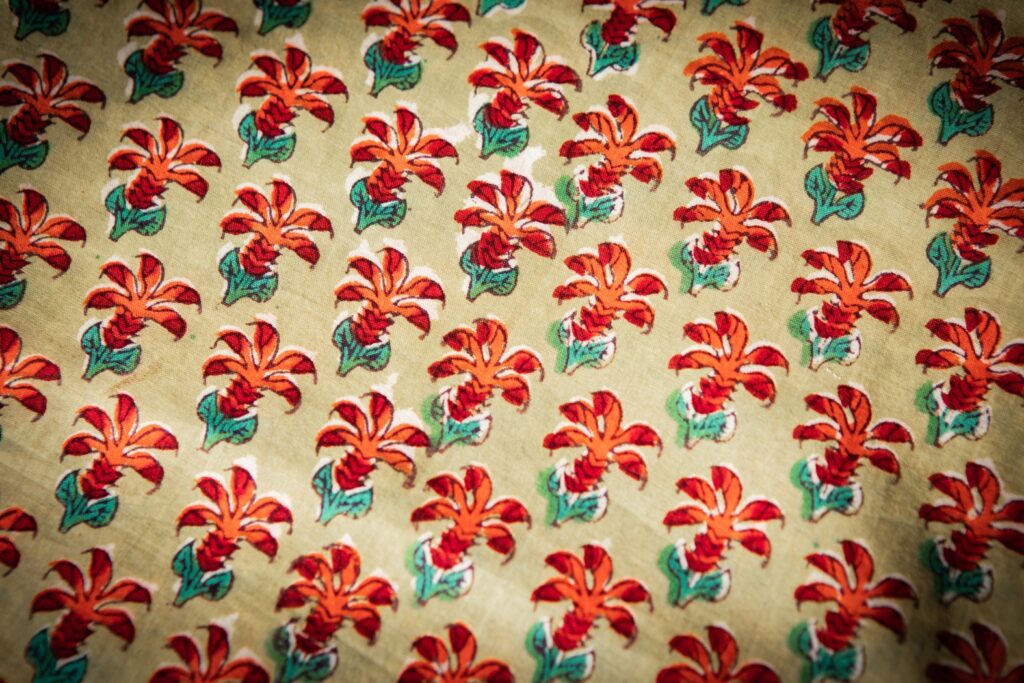
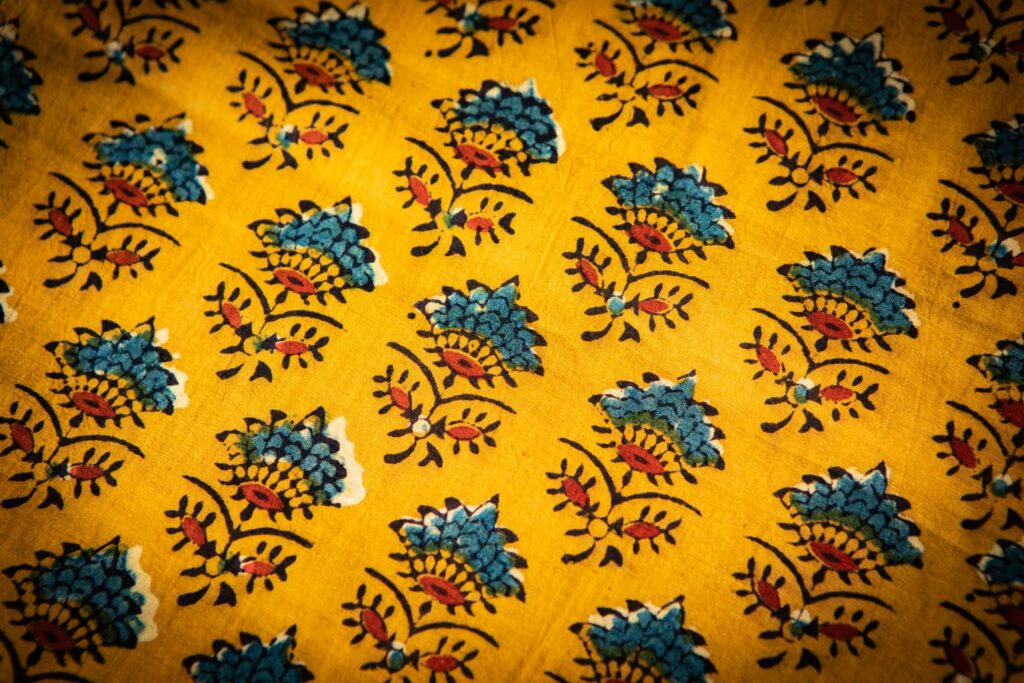
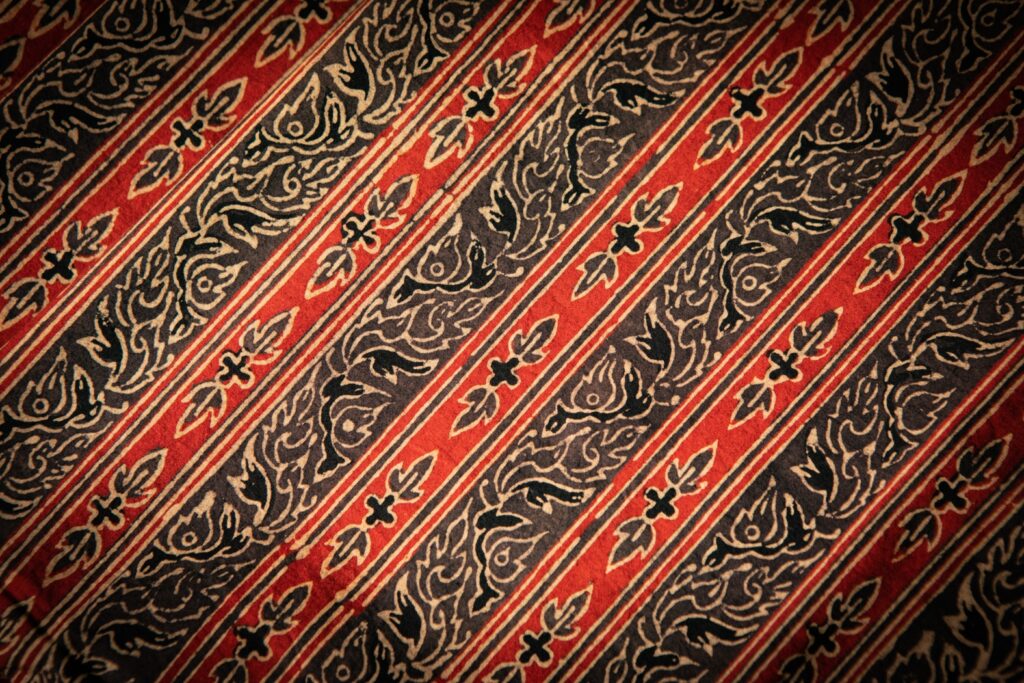
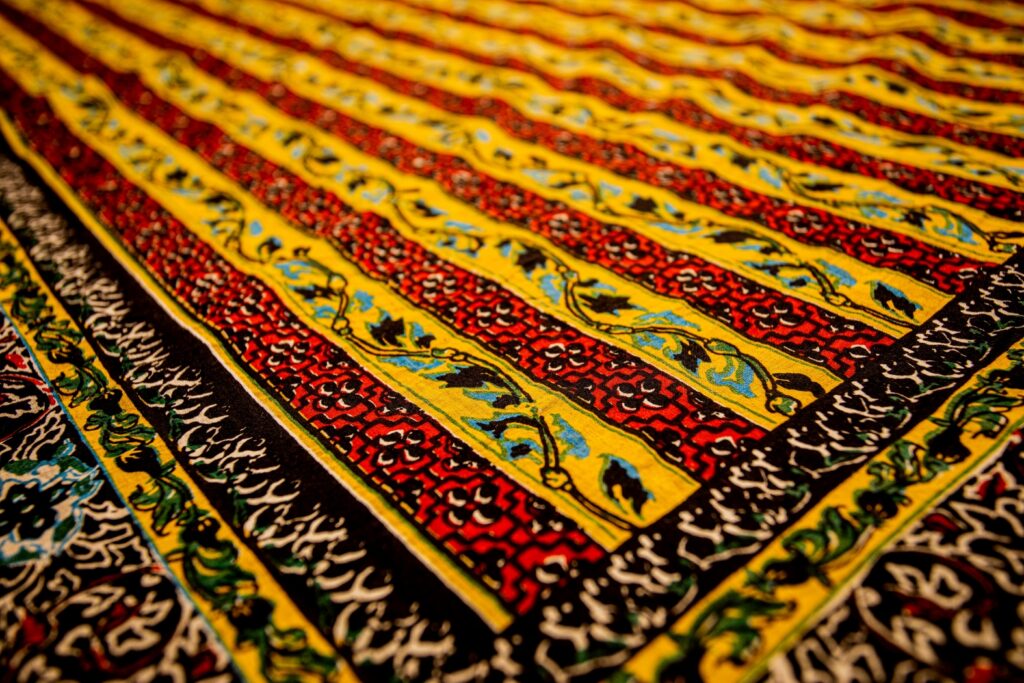
Indian textiles have left an indelible imprint on Thai cultural tapestry, swiftly gaining prominence within royal circles. Tailored patterns inspired by Indian designs, exemplified by the “Lai-Yang” print, were assiduously carved into printing blocks. This fabric, originating from India, holds a revered position in royal ceremonies due to its distinctive design. Initially featuring predominantly Indian motifs, these textiles underwent an evolution as the royal court’s artisans were galvanized to craft patterns infused with Thai cultural motifs, establish vibrant color palettes, and develop prototypes for production. The “Lai-Yang” print stands as a testament to the creative acumen of Thai artisans, showcasing intricate designs on fabric. While the patterns adorning royal vestments and Thai-themed textiles possess a uniquely Thai essence, they undeniably bear the hallmark of Indian cultural influence, epitomizing their shared historical narrative.
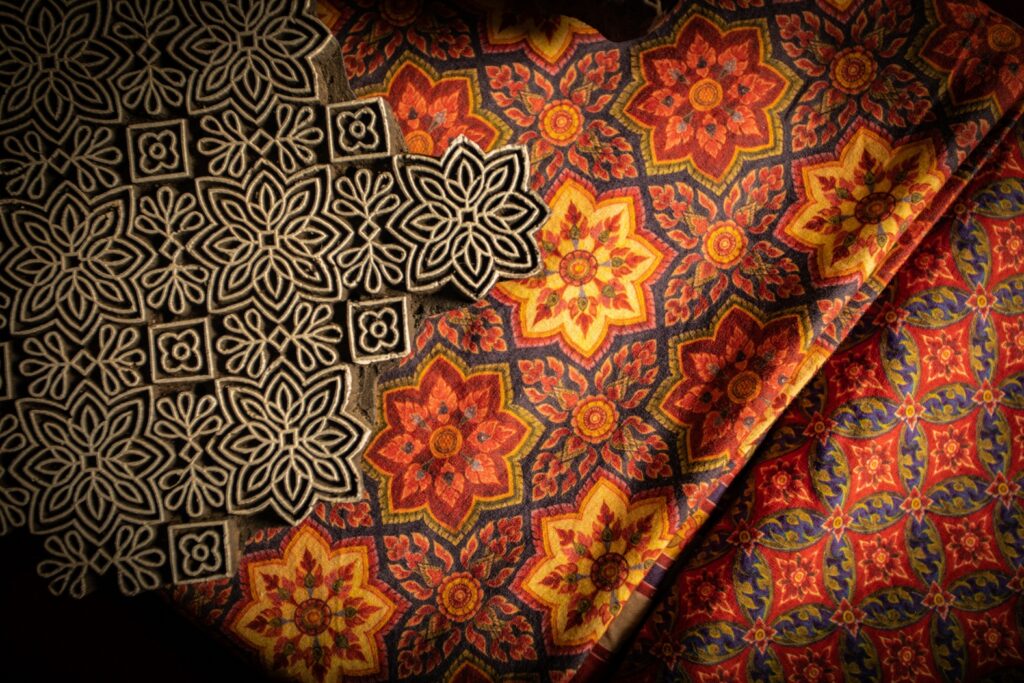
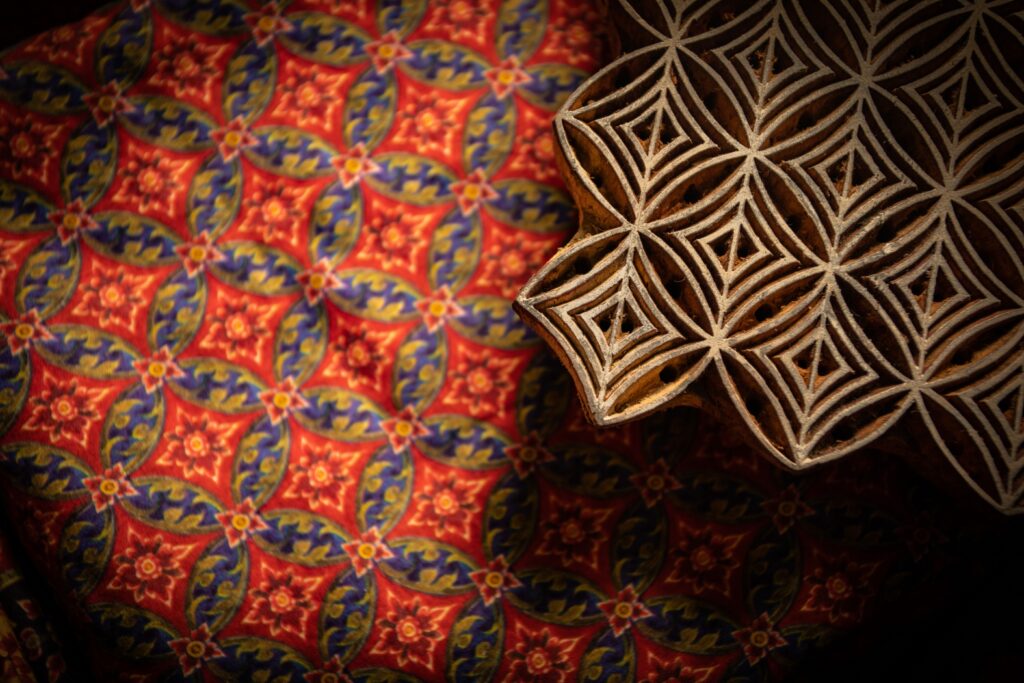
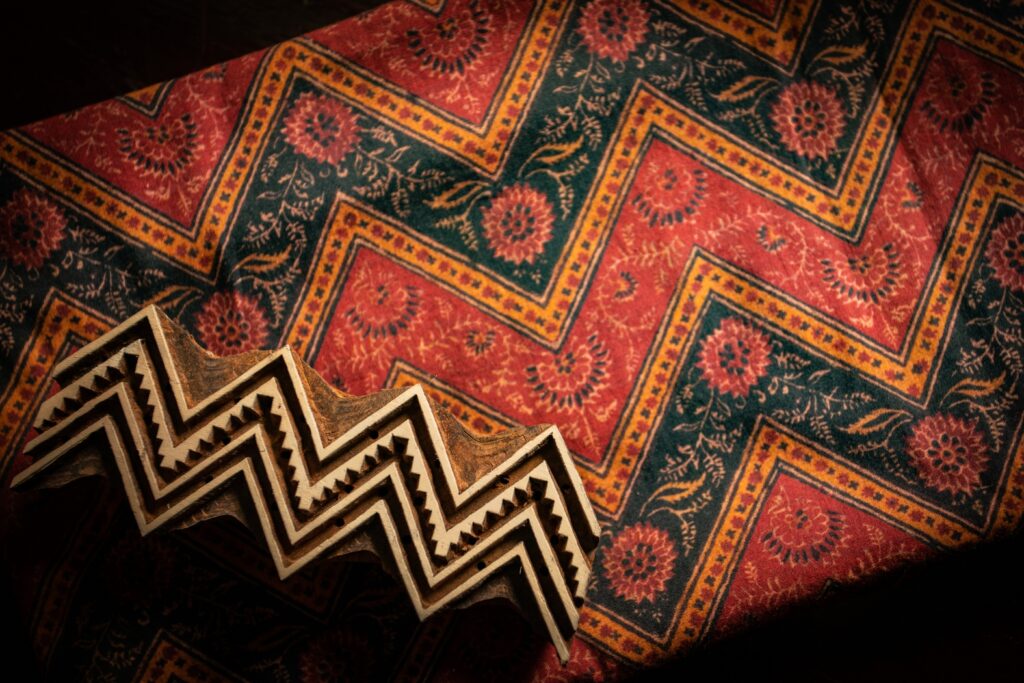
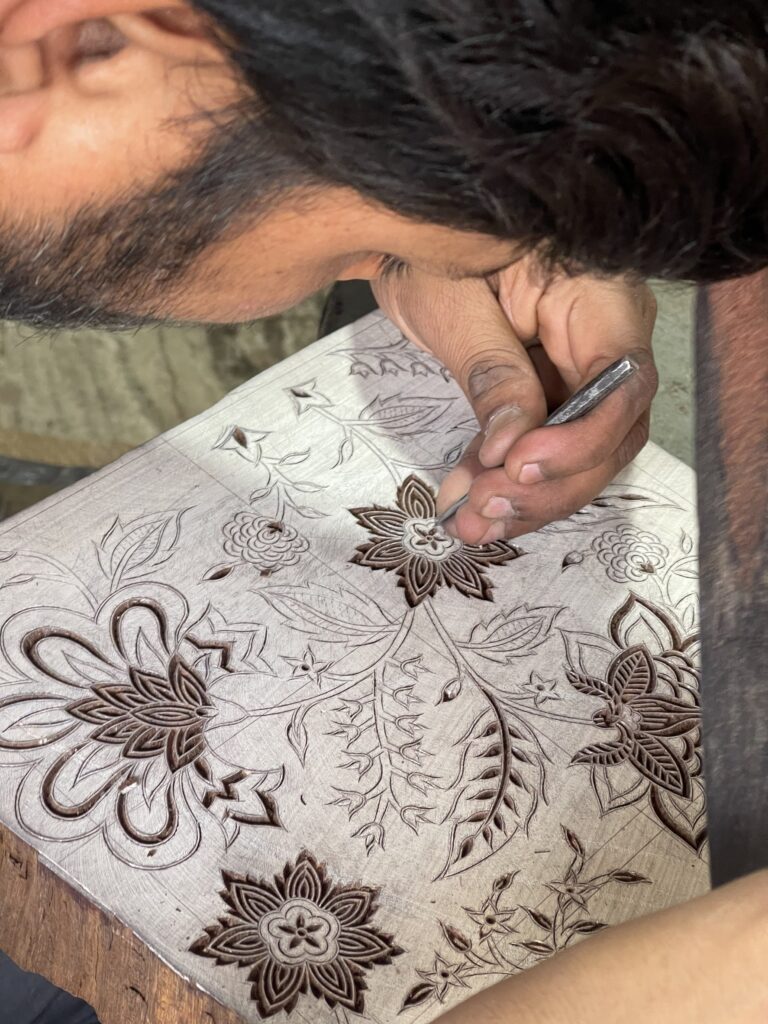
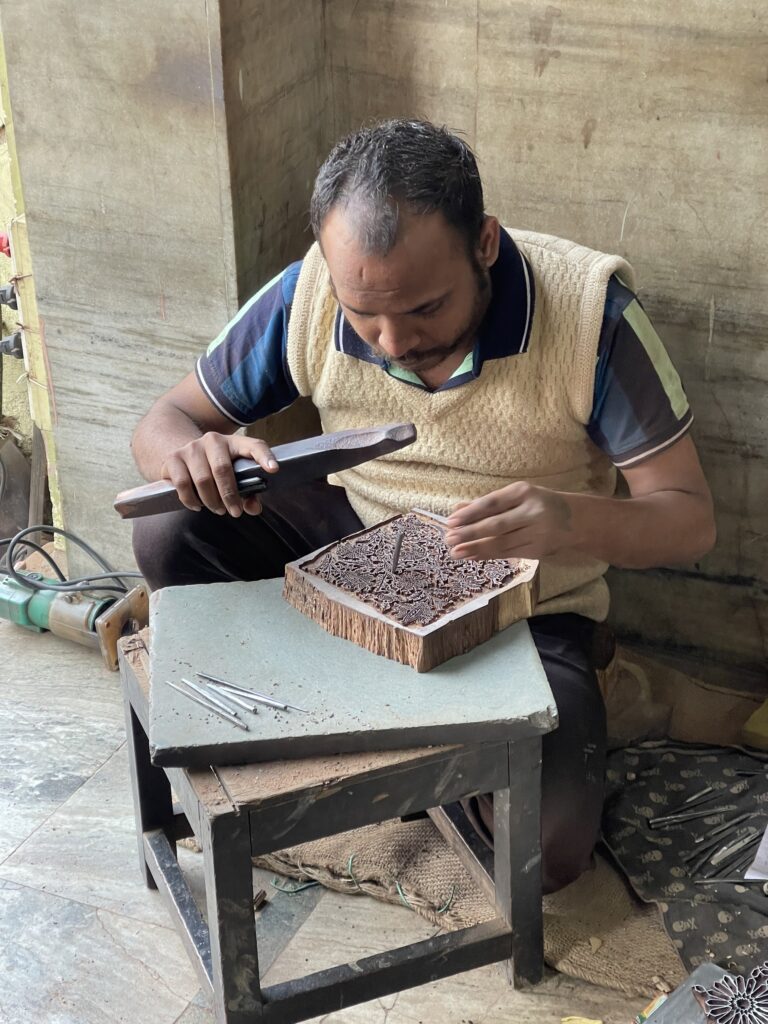
The genesis of a finely patterned fabric entails a sequence of intricate processes. It commences with designing the pattern, transferring it onto paper, carving a wooden block to replicate the design, and selecting the optimal color palette. Subsequently, the wooden block is immersed in paint, and the pattern is assiduously imprinted onto the fabric. This phase necessitates impeccable precision to ensure a seamless and aesthetically pleasing outcome. Let us champion these artisans and advocate for their craft to preserve the sustainability and splendor of these exquisite creations.
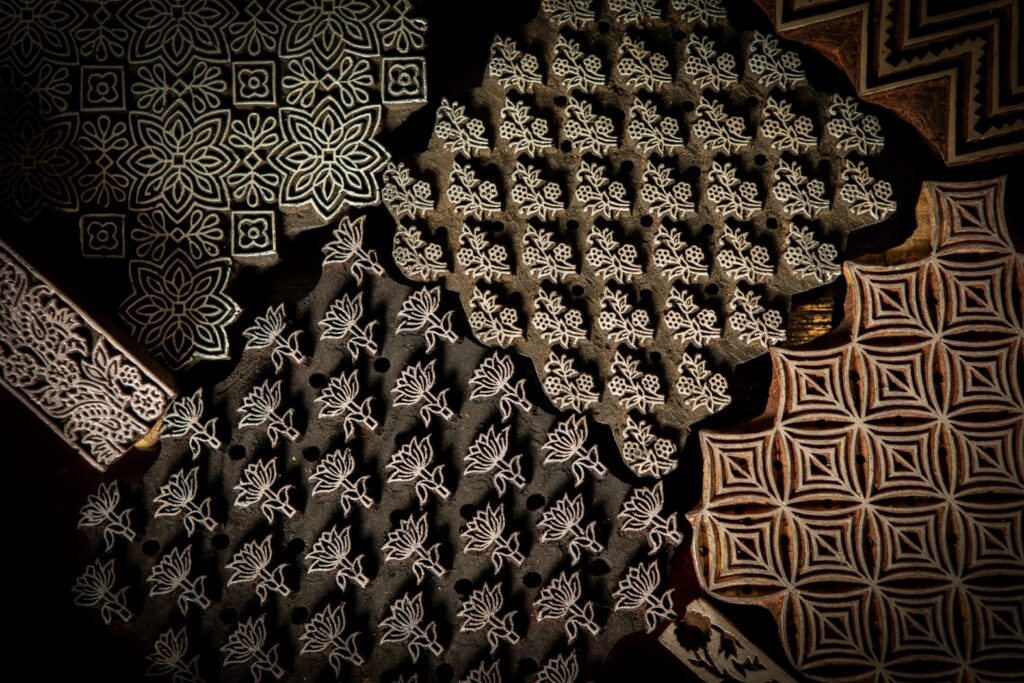
An author assistant Nonthawat Ningjaiyen
Thank you
www.praew.com
www.lushfabjaipur.com/blogs/lushfab-jaipur-textiles/block-printing-on-fabrics-in-india-introduction-history-process-art-designs
www.thedesigncart.com/blogs/news/hand-block-printing
TRULY THAI AUTHENTIC YOU CAN BE
>>ติดตามเรื่องราวความเป็นไทยอย่างใกล้ชิดที่ Thai Style Studio<<
เพราะเราเชื่อว่า “มากกว่าความรู้สึก คือ การได้สัมผัสประสบการณ์ความเป็นไทยด้วยตัวคุณเอง”
